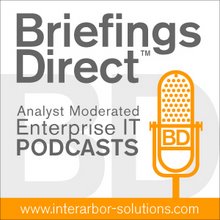The HP POD 240a also costs 25 percent of what traditional data centers cost up front, and it can be deployed in 12 weeks, said HP. It houses up to 44 industry standard racks of IT equipment.
The EcoPOD joins a spectrum of other modular data center offerings, filling a gap on the lower end of other PODs like the shipping-container-sized Custom PODs, the HP POD 20c - 40c, and the larger bricks and mortar HP Flexible Data Center facilities. [Disclosure: HP is a sponsor of BriefingsDirect podcasts.]
The EcoPOD can be filled with HP blade servers and equipment, but also supports servers from third-parties. It is optimized for HP converged infrastructure components, however. HP says the EcoPOD can be ordered and delivered in three months, and then just requires an electric power and network connect to become operational.
The modular design, low capital and operating costs and rapid deployment will be of interest to cloud providers, Web 2.0 applications providers, government and oil industry users. I was impressed with its role in business continuity and disaster recovery purposes. The design and attributes also will help those organizations that need physical servers in a certain geography or jurisdiction for compliance and legal reasons, but at low cost despite the redundancy of the workloads.
The HP EcoPOD also provides maximum density for data center expansion or as temporary capacity during data center renovations or migrations, given that it streamlines a 10,000-square-foot data center into a compact, modular package in one-tenth the space, said HP.
The design allows for servers to be added and subtracted physically or virtually, and the cooling and energy use can be dialed up and down automatically based on load and climate, as well as via set policies. It can use outside air when appropriate for cooling ... like my house most of the year.
The HP POD 240a is complemented by a rich management capability, the HP EcoPOD Environmental Control System, with its own APIs and including its own remote dashboards and control suite, as well as remote client access from tablet computers, said HP.
The cost savings are eye-popping. HP says an HP POD 240a costs $552,000 a year to operated, versus $15.4 million for traditional systems energy use.
Built at a special HP facility in Houston, HP POD-Works, the EcoPODs will be available in the Q4 of this year in North America, and rolling out globally into 2012.
HP is also offering leasing arrangement, whereby the costs of the data center are all operating expenses, with little up-front costs.
You may also be interested in:
- HP's Instant-On Enterprise Initiative Takes Aim at Shifting Needs of Business and Government
- Hastening Trends Around Cloud, Mobile Push Application Transformation as Priority, says Research
- HP's IT Performance Suite empowers IT leaders with unified view into total operations, costs
- Data Center Transformation Includes More than New Systems; There's Also Secure Data Removal, Recycling, Server Disposal

